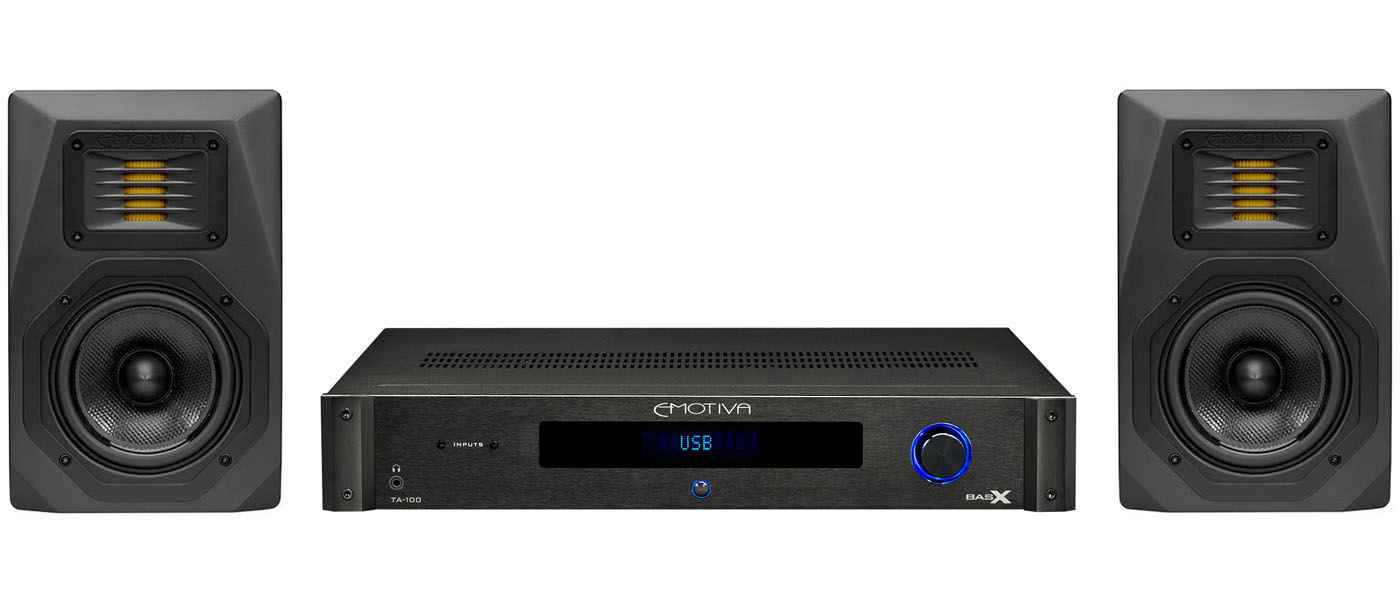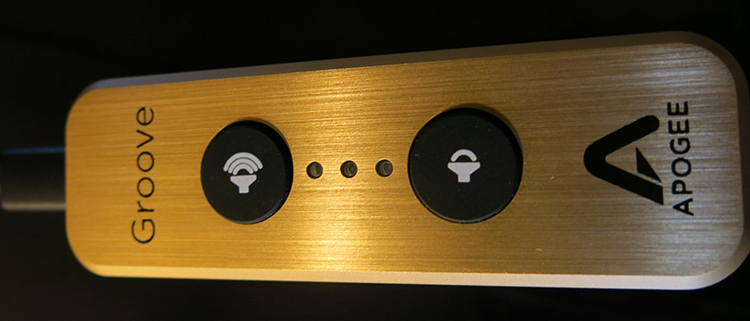
Apogee Groove USB DAC and Headphone Amp
- Excellent build quality
- Current-based amplification for intimate musicality and ability to drive any headphone
- Hi Res ready
- Light weight makes it a great portable solution if your phone has sufficient battery capacity
The proliferation of DAC-headphone amps in these times is second only to that of headphones themselves. Every audio manufacturer is in the game, even if they haven’t made such products in the past. As an audiophile this is encouraging – I know it’s the kids buying these things, and the vinyl as well. The only downside is the overwhelming number of choices. Secret’s writer Chris Groppi wrote an extensive roundup last summer.
The Apogee One was featured there, its multi-purpose nature, serving as a recorder as well as playback device, was unique among the devices in the survey and reveals its pedigree: Apogee is a pro-audio company, historically regarded as the best or one of the best at A/D and D/A conversion. What happens when they aim their engineering talents at a playback-only device? The Apogee Groove. Unlike the One and others in Chris’ roundup, the Groove is not intended for mobile use, however. Its high current requirements are too much of a drain for the battery of most mobile phones (more on that below). Rather, the Groove is meant primarily for connection to a laptop or other computer via USB.
Up to:
24 bit / 192kHz audio
Asynchronous:
Clocking
Powered by:
USB
Dimensions:
(95mm L x 30mm W x 16mm H)
Built in the:
USA
THD+N -109 dB with:
600 Ohm load @ 16 dBu-Anniversary Edition
THD+N:
-101dB with 30 Ohm load @ 10.5 dBu-Anniversary Edition
Dynamic Range:
119dB a-weighted-Anniversary Edition
Frequency response:
10Hz – 20K +/- 0.2dB 10Hz – 20K +/- 0.1dB-Anniversary Edition
Max output level:
225mW into 30 Ohm, 40mW into 600 Ohm
8 channel ESS DAC:
(4 DACs per channel)
MSRP:
$595 (Anniversary Edition), $295 Standard Edition
Company:
SECRETS Tags:
Apogee Groove, DAC, Headphones
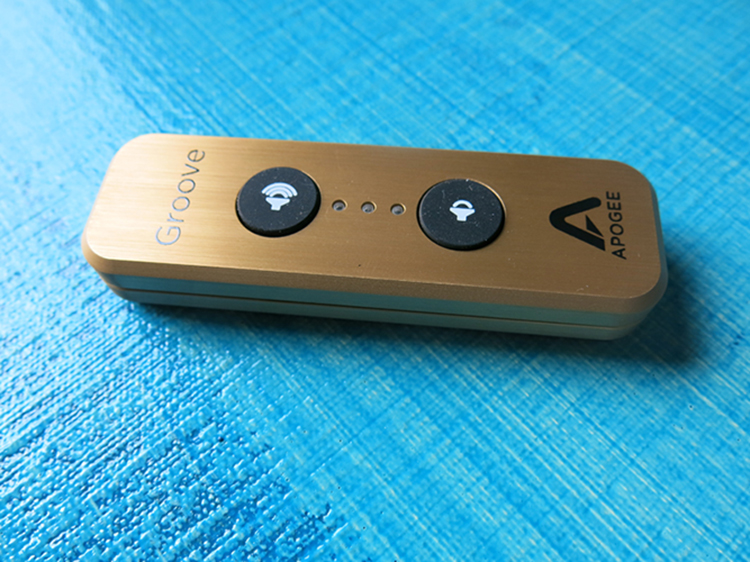
In the specs above I listed the numbers for the Anniversary Edition. It seems like each of the distortion specs is 2db better for the Anniversary Edition than for the standard Groove. The DAC itself ( ESS Sabre 9016 – 32 bit processing) is different in the standard Groove (ESS 9006A – 28-bit processing). Actually it’s DACs, not DAC as the Groove uses four DACs per channel, summing their output to create the current input for the amplifier section.
Secrets Sponsor
ESS is far and away the most common DAC solution found in hifi these days. AKM is the closest competitor sonically and they make some fine DACs as well. One thing ESS has pioneered is an improved method of digital volume control. Apogee mentions it in their discussion of DAC technology here.
At the human end, volume is controlled on the Groove by the only two buttons available, one for up, one for down. The row of lights in between the two buttons will flash (pink) with the music until a volume button is pressed. At that point the lights switch to indicating the relative volume level (in green).

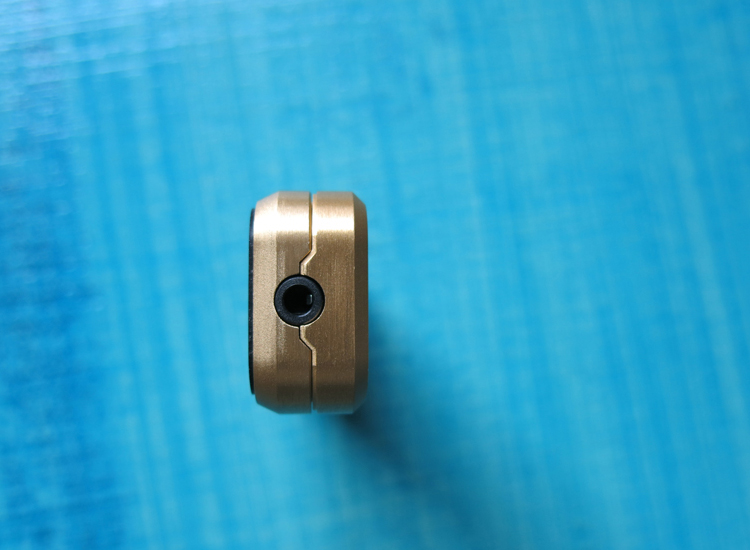
I’ve written before at how I like to evaluate hifi components by their weight: Generally, no matter what the component is, the heavier the better as that weight represents (among other things) a heavy transformer or in the case of speakers, a heavy magnet and cabinet. In the case of the Apogee Groove, any weight that it has is from the aluminum case, which, while attractive and well-constructed, doesn’t add up to much weight-wise. This is true of small DACs in general and might be considered an advantage if the DAC is meant to be portable. The Groove is not touted as a portable however, there is no battery and, with the quad-sum DAC (per channel) strategy and current based amplification, power requirements are high. I didn’t try the Groove with my ancient iPhone 4S as it is, for all practical purposes, permanently ensconced in a VModa AMP/DAC wrapper. The long discontinued VModa product no longer suits my musical needs but it still provides battery backup for my phone. The Apogee Groove won’t do that but you could connect it to an iPhone and then get a message saying that the iPhone refuses to drive it as the power requirements are too high. Apogee has used the Groove with the new Samsung Galaxy 6 however, they write about it here. They report 60% of the battery used up after two hours. I’m thinking most people would want something less power-hungry/more battery-preserving but it is an option. The sound of the Groove might make it worth the risk of using up your mobile’s charge, more on that below.
Secrets Sponsor
Issues of power quantity are one thing, what about quality? I wondered about this with the Groove because last I checked, the power available from computer motherboards (which is where USB connectors get their power) was said to be horribly noisy and incompatible with high fidelity. The Apogee Groove as well as other portable DACs from CeEntrance, Audioquest have turned that notion on its head. I’m not sure how this has been done. Good use of voltage regulators is part of it I’m sure. I asked Brad Delava of Apogee, he didn’t reveal any company secrets but did say that clean power is indeed key for all of their products and their engineers have extensive experience in cleaning and filtering USB supplied voltage rails.
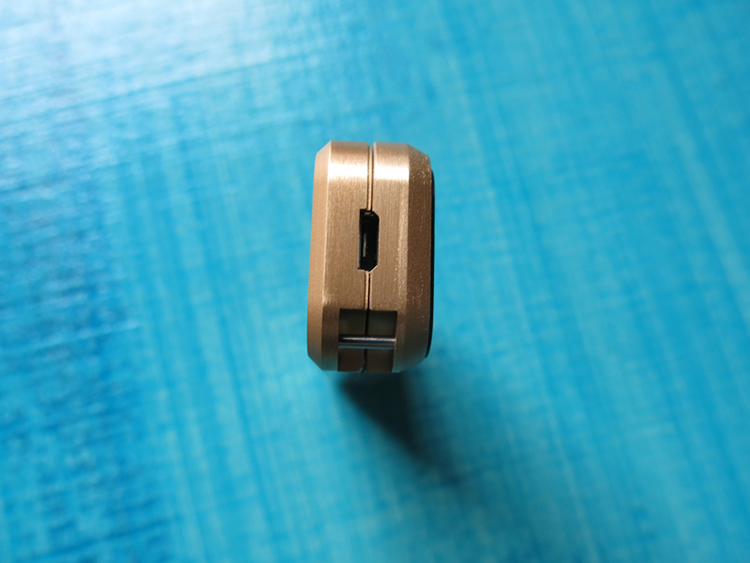
While the power requirements are high, it’s for a reason. It shows that Apogee is not attempting just another ‘me too’ headphone amp. Indeed the amplifier circuit is of the current drive variety. On their website Apogee describes it as ‘Constant Current Drive’. You can see from the stated power specs that more current is used for lower impedance phones as expected. The main point is that as a current-based amplifier it lends itself to the intimate listening experience of headphones. I first encountered this with Simaudio’s massively more expensive (and more massive) 430HA. Yes it’s massively more massive, take my word for it.
The Groove comes with a suitably short USB cable with a Type-A Male USB Connector at one end and a Mini Type-B Male USB Connector at the other end. Suitably short because the expected usage of the Groove would be plugged into a laptop sitting on a desk. The Groove will sit flat on the table with the volume control in easy reach.
I reviewed the Anniversary Edition of the Groove, the standard Groove comes in black only (black is cool, still), and uses the 9006A Sabre DAC chip from ESS while the Anniversary Ed, utilizes ESS’s 9016.
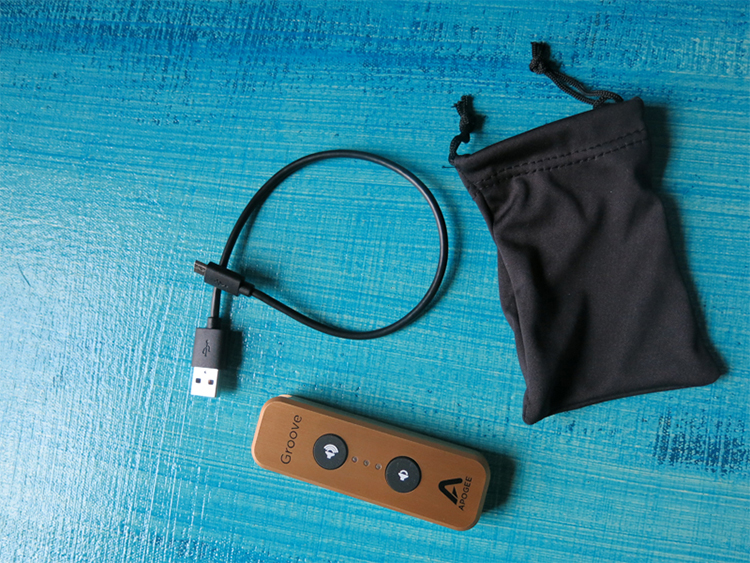
Before listening, the Groove requires a driver installation for PC’s running Windows (Macs do not need a driver). This took me about five minutes, no hiccups. After plugging in, I listened to see if I could discern any break-in period. I think I noticed a change after a couple of hours but not much. In cases like these I wonder if it’s my ears that are breaking in.

There’s a lot to say about the sound of the Groove Anniversary Edition but let me cut to the chase: It is awesome, musical and engaging with a very special ability to present timbre and texture without muddling things up. The most striking example of this was listening to St Vincent’s self-titled record from 2014. I have the digital version of this thanks to the download card included with the vinyl.
Even the vinyl for this record demands the best of systems to make it listenable as there are multiple instruments and voices in the treble range, and most likely, it was made with less than optimal recording techniques. It can be grating. This is annoying because the music is intricate and challenging and rocks-it to say the least. The Groove Anniversary Edition redeemed this recording, for once I didn’t want to switch to some other activity or record. There are two guitars going most of the time and the interplay was completely revealed and mystifying.

Another recording in my collection that has been in need of redemption is TV on the Radio’s “Seeds”. Many great-seeming songs rendered not great-sounding by a bit of digititus and an overly analytic recording. Forget all that with the Groove. Be transported instead.
Can I just say that in this era when bands have allegedly run out of names (“Car Seat Headrest” would seem to confirm that notion) TV on the Radio shows that there are still classic band names out there.
I did my listening at home using MP3 downloads obtained from vinyl purchases played through the Pono Music World program on a PC. For headphones I used the recently reviewed Beyerdynamic T1 version 2’s.
At work I like to tune into KEXP.
Similar musical experiences were had with their wonderful, DJ driven selections but I was also struck by the more intimate and distinct voices of the DJ’s themselves. I could hear into the room more. Listening at work was through very old AKG-450’s and the reference system is a similarly dated Bel Canto DAC1 (with upgrades) fed optically from the computer and then amplified with another pro-audio piece, the discontinued Furman SP-20AB. That’s a lot of hardware and power supply to beat but the Groove was the clear winner. DACs have come a long way.
I noticed that the Groove got warm, not alarmingly so, good for warming your fingers if they happen to be cold. This happened more with the 32 Ohm AKG’s. Not as much with the 600 Ohm Beyer’s.
Not wanting to be completely outdone by Groppi’s aforementioned DAC roundup I borrowed a Chord Mojo briefly for comparison. As always, Stereotypes Audio here in Portland, OR extended their help and generosity.
The Mojo is set up for portable as well as domestic use in that it has its own battery. In this case it’s a pretty heavy battery, claimed to be able to support DAC operation for 10 hours. As noted above, DACs have come a long way and Chord is a unique player in that they develop their own DAC solutions using a different approach than most. While all modern DAC chips are a variation of some combination of R2R ladder and delta-sigma (a more process-dependent approach that creates noise – but noise that is beyond the spectrum of our hearing). Chord takes advantage of that notion to a far greater degree, implementing a very process-dependent method of D/A conversion. As someone who studied DSP in school and dreamed of a job creating better DACs, I very much applaud their efforts but in the case of the Mojo I’m not thrilled with the results.
I should clarify, the results are thrilling, as in, incredible articulation and distinct presentation of each instrument and voice as well as more treble and more bass than the Groove. But, still I experienced a bit of digital fatigue that I don’t get with the Groove. When I listened to the Mojo, I was wowed but I wanted to go find something else to do. With the Groove, I wanted to listen more. As I’ve stated before, the true test for hifi is not A/B comparisons (though those are useful for those with a practiced ear), it’s “How long do you listen?” I should note that I played the Mojo overnight for break-in, some pieces need more. While the distinction of each instrument, and as I wrote in my notes “exquisite texture” were impressive, the dynamic changes left me flat, as though everything is up front, all the time. For instance, the drums on St Vincent’s Rattlesnake were much more distinct with the Mojo but when the guitar or voice was supposed to take off and escalate the musical experience, it happened with the Groove, not the Mojo.

One more comparison, I listened to “Seth Avett & Jessica Lea Mayfield Sing Elliott Smith” and concluded that Jessica Lee Mayfield’s voice may be the sweetest substance on earth. The Mojo made that clear – like maple syrup when your whole life you’ve lived on broccoli. The Groove lost just a bit of that – very good maple syrup but not the best you ever had – but it also made music, made me want to listen (rather than raid the refrigerator, for instance).
One thing that I could have used on the Apogee is a mute button. Yes, the attached computer provides a couple of ways to stop the flow of music or mute the audio output but that takes a couple of clicks at least as well as pushing the mouse around. When the phone rings or someone walks into my office, it would be good to be able to hit a button to silence the output.
One way I was able to achieve that was to use the headphone output of the Groove as the line level input of the old Furman amp I mentioned above. I tried this because I was curious if the sound quality would be improved or hampered by such a connection. I can’t say that it made a huge difference one way or another, but it did reveal that the Groove can be used not only for phones but as the DAC input to a larger stereo system. I used a home-made 1/8” stereo mini split to balanced XLR’s for this. Brad Deleva of Apogee confirmed that the Groove, with its current-based amp, is well suited to such usage.
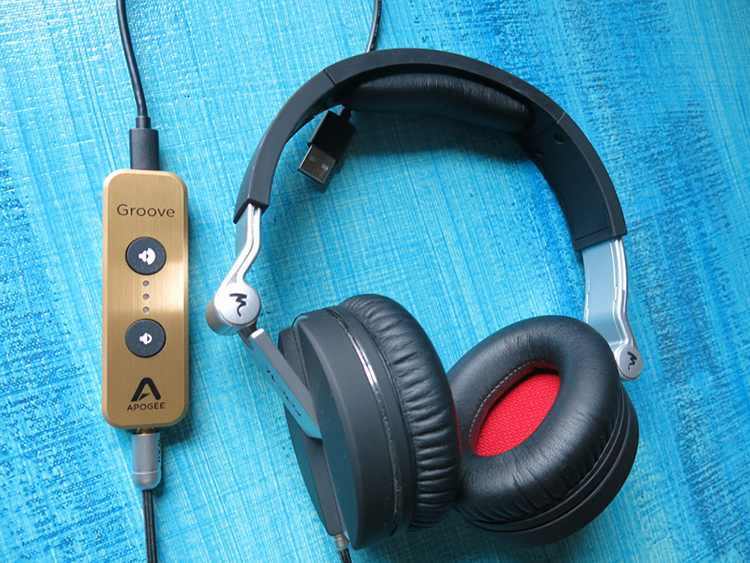
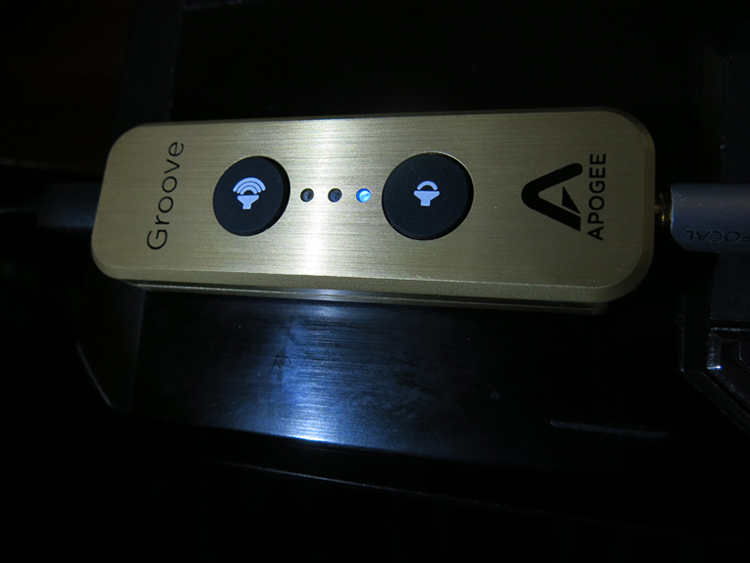
THE APOGEE GROOVE ANNIVERSARY EDITION is a Unique DAC Solution From an Engineering-driven Company, Well Known in the Pro-audio World.
- Warm, Intimate sound.
- Beautiful finish.
- Easy to operate.
- Mute button. Some way to use an external battery while traveling.
The headphone and DAC proliferation is creating great, affordable opportunities for audiophiles. The Apogee Groove is one of those. If portability is not crucial for you, or your mobile device happens to have the required hutzpah, the Groove is ready to provide hours of musical enjoyment.


